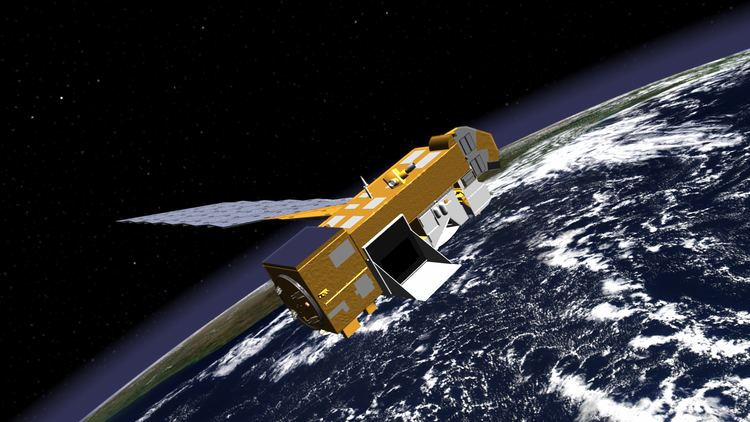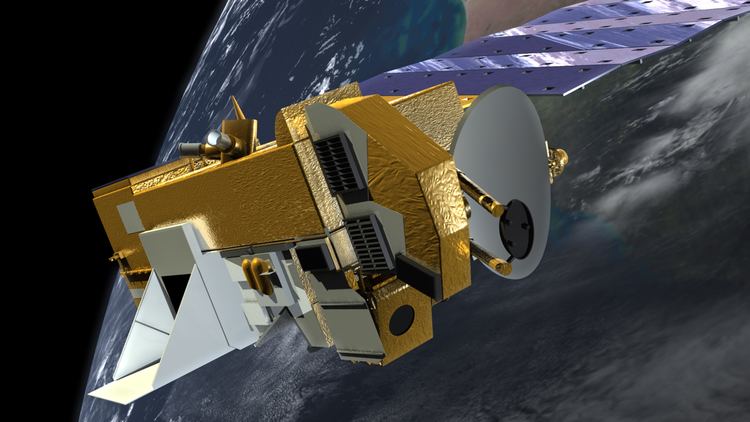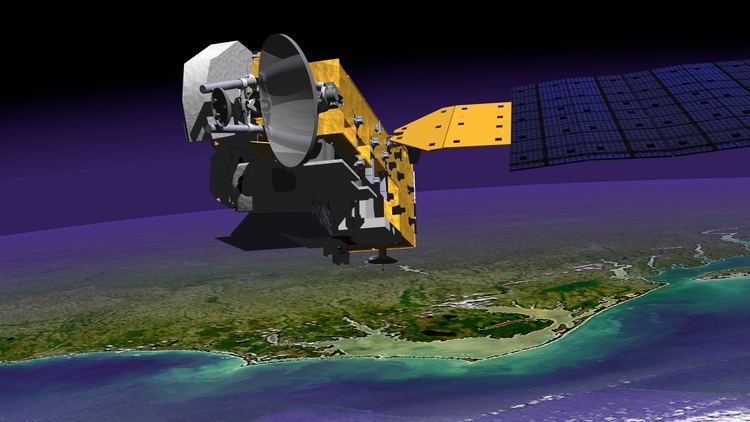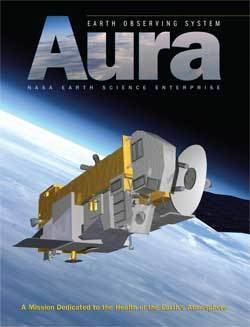SATCAT no. 28376 Bus T330 (AB-1200) Launch mass 2,970 kg Inclination 98.22° | COSPAR ID 2004-026A Website aura.gsfc.nasa.gov Launch date 15 July 2004 Inclination 98.22° Manufacturer TRW Inc. | |
 | ||
Dimensions 4.70 m x 17.37 m x 6.91 m Similar | ||
Aura (EOS CH-1) is a multi-national NASA scientific research satellite in orbit around the Earth, studying the Earth's ozone layer, air quality and climate. It is the third major component of the Earth Observing System (EOS) following on Terra (launched 1999) and Aqua (launched 2002). Aura follows on from the Upper Atmosphere Research Satellite (UARS).

The name "Aura" comes from the Latin word for air. The satellite was launched from Vandenberg Air Force Base on July 15, 2004, aboard a Delta II 7920-10L rocket.

The Aura spacecraft has a mass of about 1,765 kg (3,891 lb). The body is 6.9 m (23 ft) long with the extended single solar panel about 15 m (49 ft) long.

Aura flies in a sun-synchronous orbit, in formation with 6 other satellites, collectively known as the "A Train". The other satellites in the formation are:

All satellites have an equatorial crossing time at about 1:30 in the afternoon, thus the name 'A (Afternoon) Train'.

Mission
Aura carries four instruments for studies of atmospheric chemistry:

